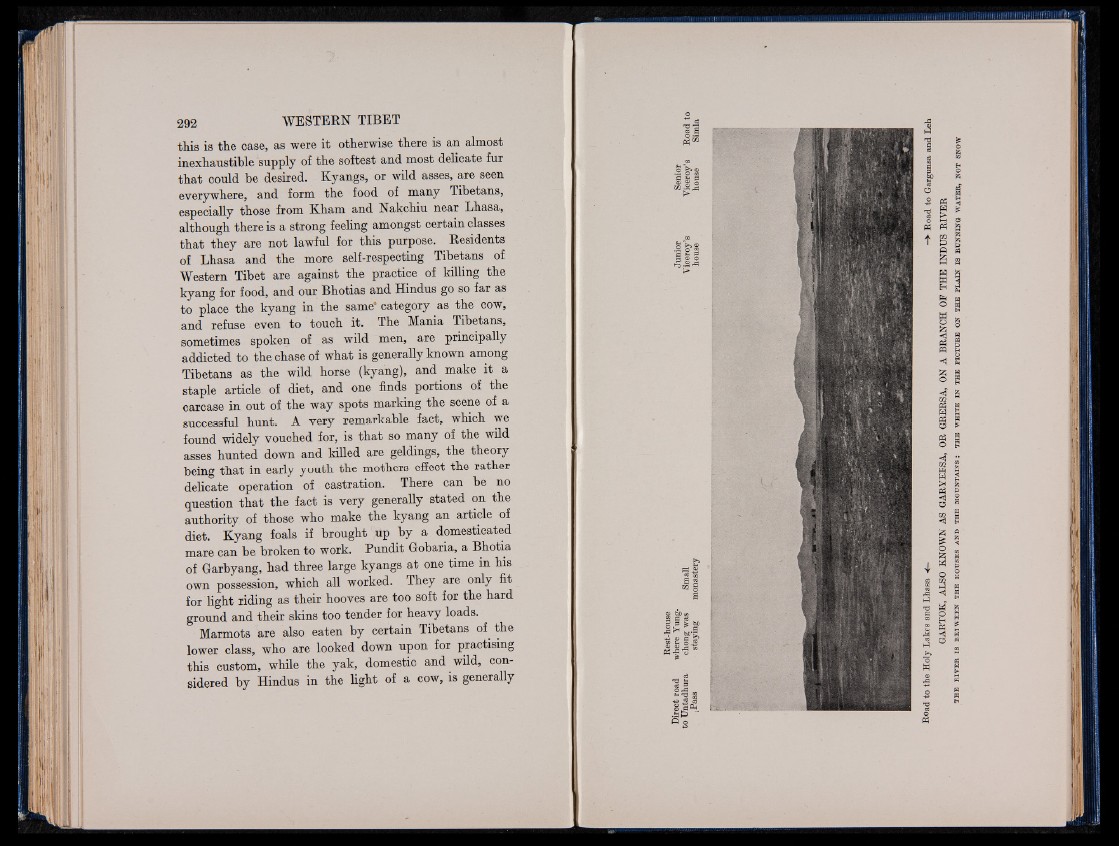
this is the case, as were it otherwise there is an almost
inexhaustible supply of the softest and most delicate fur
that could be desired. Kyangs, or wild asses, are seen
everywhere, and form the food of many Tibetans,
especially those from Kham and Nakchiu near Lhasa,
although there is a strong feeling amongst certain classes
that they are not lawful for this purpose. Residents
of Lhasa and the more self-respecting Tibetans of
Western Tibet are against the practice of killing the
kyang for food, and our Bhotias and Hindus go so far as
to place the kyang in the same“ category as the cow,
and refuse even to touch it. The Mania Tibetans,
sometimes spoken of as wild men, are principally
addicted to the chase of what is generally known among
Tibetans as the wild horse (kyang), and make it a
staple article of diet, and one finds portions of the
carcase in out of the way spots marking the scene of a
successful hunt. A very remarkable fact, which we
found widely vouched for, is that so many of the wild
asses hunted down and killed are geldings, the theory
being that in early youth the mothers effect the rather
delicate operation of castration. There can be no
question that the fact is very generally stated on the
authority of those who make the kyang an article of
diet. Kyang foals if brought up by a domesticated
mare can be broken to work. Pundit Gobaria, a Bhotia
of Garbyang, had three large kyangs at one time m his
own possession, which all worked. They are only fit
for light riding as their hooves are too soft for the hard
ground and their skins too tender for heavy loads.
° Marmots are also eaten by certain Tibetans of the
lower class, who are looked down upon for practising
this custom, while the yak, domestic and wild, considered
by Hindus in the light of a cow, is generally